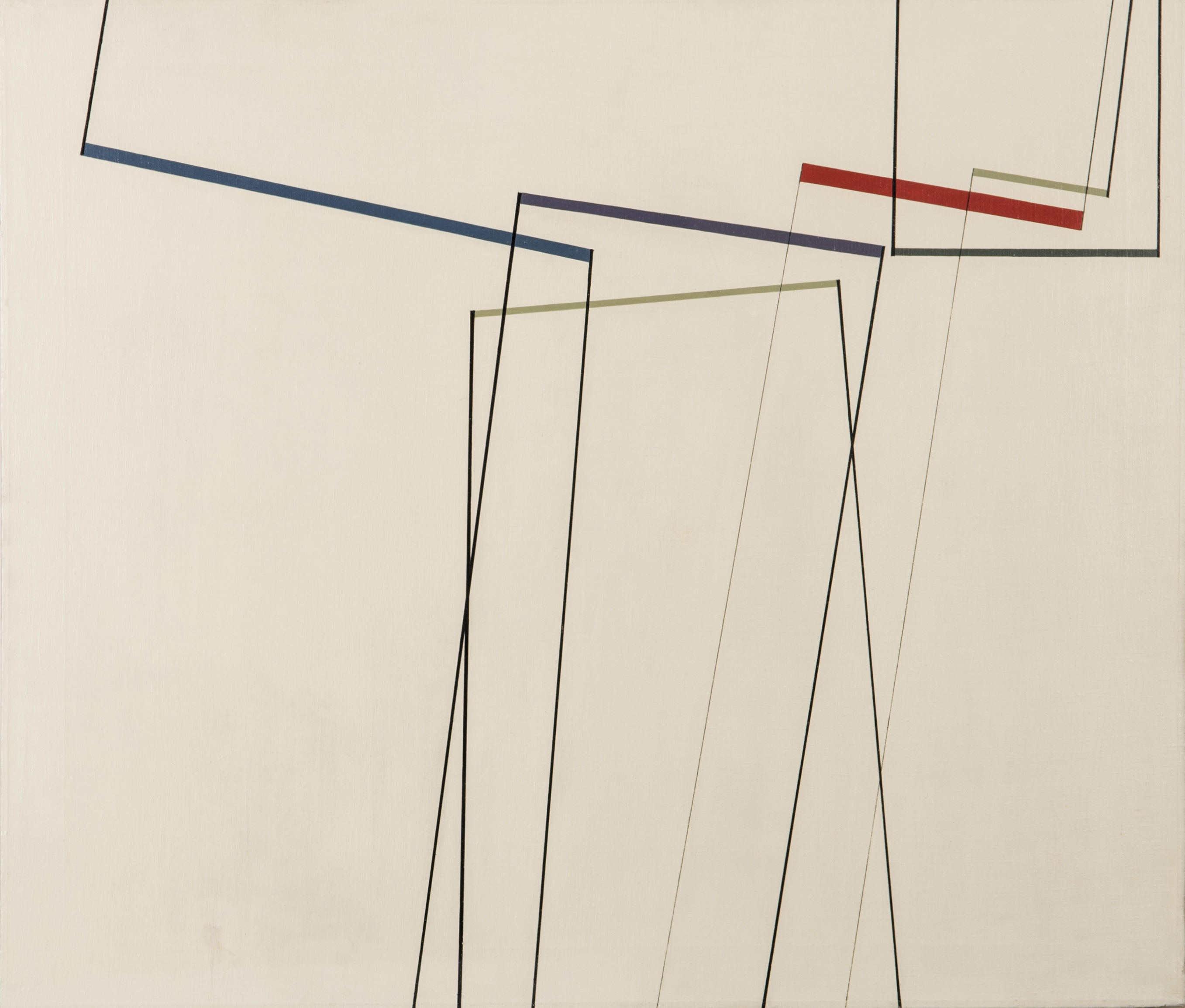Tomás Maldonado attended the Escuela Nacional de Bellas Artes Manuel Belgrano in Buenos Aires (1939-1941). In 1942, he wrote the Manifesto de los cuatro jovenes, along with Jorge Brito, Claudio Girola and Alfredo Hlito, in which he expressed his disagreement with the artists”™ selections for the Saln Nacional that year. In 1944, he was a member of the group Mad”including Edgar Bayley, his brother, Carmelo Arden Quin, Gyula Kosice, Rhod Rothfuss and Lidy Prati, whom he married later that year, that published the magazine Arturo. Violently combative in its eagerness to break with the different currents of figurative art and follow the international avant-garde movements, Arturo promoted abstract-geometric and constructivist art in Argentina. At that time, Maldonado, like several of his friends, made paintings with irregular frames. The hallmark of the work of the artists around Arturo was the novel idea of non-rectilinear frames. However on the cover of the only published edition of the magazine the artists chose to reproduce a xylograph of abstract-organic and automatist character that did not conform to their framing practice. In 1945, shortly before the differences among its founders caused the end of the magazine, two exhibitions organized by the group, titled Concrete-Invention Art and Movimiento de arte concreto invencin, gave birth to a new group called Asociacin Arte Contreto-Invencin, in which Maldonado was joined by Hlito, Prati, Raul Lozza and Enio Iommi, among others.
With Maldonado as the main ideologue, the Asociacin advocated a type of art compatible with the scientific and technological advances of the time. They proposed an art that did not copy existing objects but rather invented new ones. Its scope, opposed to the multidisciplinary character of the Mad movement that evolved from Arturo. In 1946, the inaugural exhibition of the Asociacin (Saln Peuser, Buenos Aires) took place. On this occasion, Maldonado and Bailey wrote the Manifiesto invencionista, and that same year, the magazine Arte Concreto Invencin was created and Maldonado became a contributor. At the end of the decade, he participated in a series of exhibitions that reunited the diverse abstract tendencies of the Rio de La Plata region, including Arte Nuevo (Saln Kraft, Buenos Aires, 1947) and two exhibitions at the Saln de Nuevas Realidades (Galera Van Riel, Buenos Aires, 1948 and 1949).
In 1948, Maldonado traveled to Europe and had the opportunity to meet Max Bill and Georges Vantongerloo, leading figures of the art-and-design avant-garde. He was greatly influenced by his European experience, and upon his return to Argentina, he initiated a process that involved first the re-adoption of the rectangular support for rigorous abstract geometric works. He then abandoned painting in favor of graphic and industrial design. He founded, with Alfredo Hlito, the magazine Nueva Visin, which he directed from 1951 to 1957and from which he coordinated the Grupo de Artistas Modernos de la Argentina (1952).
In 1954, Max Bill invited Maldonado to be part of the educational team of the recently founded Hochschule fr Gestaltung (Ulm, Germany), which promoted the concept that design was a process closer to science than to art. He remained in Germany until 1967, leaving shortly before the closing of the school, caused by internal conflicts and financial problems, and then moved to Milan (Italy), where he taught at the University of Bologna (1972-1979) and the Politcnico de Milan (1992-1997). With the arrival of the twenty-first century, Maldonado went back to painting and presented individual exhibitions at the Museo Nacional de Bellas Artes (Buenos Aires, 2007) and the Triennale Design Museum (Milan, 2009).
